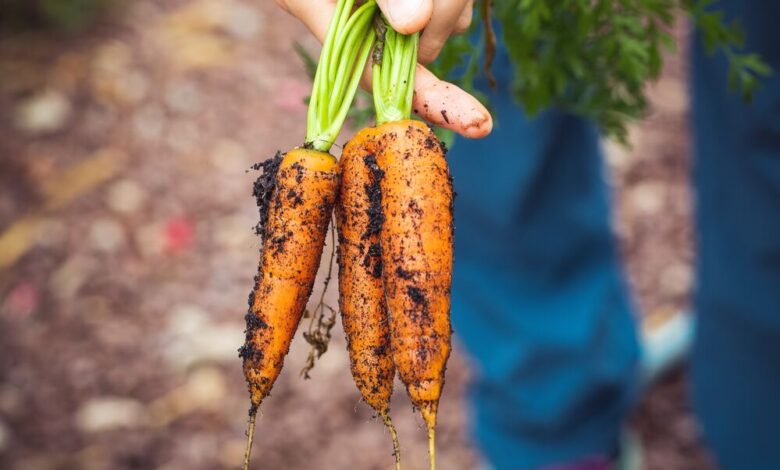Best of the Significances of Crop Rotation; The Art of Sustainable Carrot Cultivation

The Significances of Crop Rotation. Carrots (Daucus carota) are a favorite among gardeners, cherished for their delectable taste and high nutritional content. However, cultivating carrots successfully requires more than just sowing seeds and watering them. One of the most crucial aspects of ensuring thriving carrot harvests lies in understanding and implementing proper crop rotation practices. Sadly, a significant number of gardeners overlook the importance of crop rotation, leading to a multitude of challenges that adversely impact carrot growth and deplete soil health. In this comprehensive article, we will delve into the critical significance of crop rotation in sustaining carrot cultivation. We will explore how neglecting crop rotation can lead to soil depletion, disease accumulation, and persistent pest problems, while also providing practical guidelines for implementing effective crop rotation strategies to ensure bountiful and sustainable carrot yields.

-
The Role of Carrots in Nutrient Uptake: The Significance of Crop Rotation
Carrots, like all plants, absorb essential nutrients from the soil during their growing season. These nutrients, including nitrogen, phosphorus, and potassium, are vital for the plant’s development and production of nutritious roots. As carrots take up these nutrients from the soil, the earth becomes progressively impoverished, causing a depletion of essential elements necessary for healthy plant growth.
-
Adverse Effects of Neglecting of Crop Rotation: The Significance of Crop Rotation
The continuous cultivation of carrots in the same area, year after year, can lead to a series of adverse effects, including:
a. Soil Depletion: Nutrient imbalances in the soil result from carrots’ repeated absorption of essential elements, negatively impacting soil fertility and overall health.
b. Disease Accumulation: Soil-borne diseases may accumulate when the same crop is cultivated repeatedly, posing significant threats to the future health of carrot crops.
c. Persistent Pests: Pests adapted to carrots may thrive in the depleted soil, leading to recurring pest infestations.
-
The Crucial Role of Crop Rotation: The Significance of Crop Rotation
Crop rotation is an age-old agricultural practice involving systematically planting different crops in a specific sequence over several seasons or years. This rotation strategy serves several critical purposes in carrot cultivation:
a. Soil Health Restoration: By alternating carrot crops with different plant species, the soil’s nutrient levels can be replenished, promoting balanced soil health.
b. Disease Management: Planting crops from different families disrupts disease cycles, reducing the risk of soil-borne pathogens affecting carrots.
c. Pest Control: Crop rotation disrupts the habitats of specific pests, mitigating the risk of pest infestations.
-
Implementing an Effective Crop Rotation Plan for Carrots: The Significance of Crop Rotation
To ensure optimal carrot cultivation and sustainable gardening practices, consider the following crop rotation strategies:
a. Alternating with Legumes: Successive carrot crops can be followed by leguminous plants like beans or peas. Legumes have the remarkable ability to fix atmospheric nitrogen in the soil, improving nitrogen levels for the benefit of subsequent carrot crops.
b. Companion Planting with Tomatoes: Planting tomatoes after carrots can be advantageous, as these two crops complement each other. Carrots are shallow-rooted, while tomatoes have deep root systems, reducing competition for nutrients and growing space. Additionally, carrots can serve as natural companions, deterring pests from tomatoes.
c. Succession with Root Crops: Consider planting carrots after radishes, garlic, or onions. These root crops have different nutrient requirements and help break disease cycles, creating a favorable environment for carrots.
-
Green Manure: Restoring Soil Fertility During “Waiting Time”: The Significance of Crop Rotation
Between successive carrot plantings in the same area, allow for a waiting period of at least two to three years to enable the soil to recover its nutrient content. During this “waiting time,” green manure crops can be sown to rejuvenate the soil. Green manure refers to specific crops grown primarily to enrich the soil and improve its structure. These crops are later incorporated into the ground, providing organic matter, releasing nutrients, and enhancing soil fertility.
-
Companion Planting for Pest Management: The Significance of Crop Rotation
Incorporating companion planting techniques can help control pests naturally. Certain companion plants release chemical compounds that repel pests or attract beneficial insects that prey on pests, reducing the need for chemical pesticides. For instance, planting marigolds alongside carrots can deter pests effectively.
Carrots are not only a culinary delight but also a valuable source of nutrition. However, their successful cultivation requires a comprehensive understanding of the significance of crop rotation. Neglecting this essential practice can lead to soil depletion, disease accumulation, and persistent pest problems, ultimately hindering the growth of healthy and abundant carrot harvests. By embracing the principles of crop rotation and implementing effective rotation strategies, gardeners can ensure sustainable carrot cultivation, maintain soil fertility, and contribute to a thriving and environmentally friendly agricultural system. Let us recognize the crucial role of crop rotation in safeguarding the future of carrot cultivation and fostering sustainable gardens for generations to come.
Read more: Is it necessary to acidify the soil for hydrangeas: a mistake that all flower growers later regret



